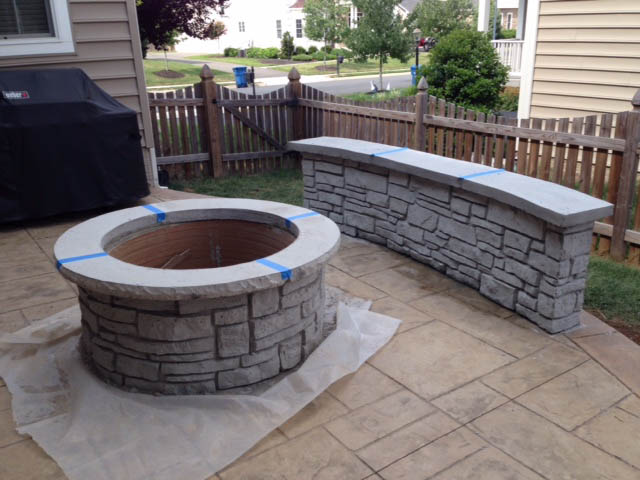Many homeowners are using their back yards for more than just barbecues.
These days, home owners want amenities like ponds, custom concrete patios, knee walls, outdoor kitchens, and increasingly, fire pits that crackle and glow.
In fact, fire pits have become so popular that they are now the number one requested design feature, according to the American Society of Landscape Architects.
Furthermore, many home owners have decided against hiring a contractor and attempt to build their own fire pit, which comes with its own set of risks. We call these DIY Fire Pit Dangers.
Here’s what we at Blackwater advise you to consider before designing your own fire pit:
Check what impact (if any) a fire pit may have on your homeowners insurance coverage. In some parts of the country, disclosing your fire pit may be a requirement of your homeowners insurance policy. We always recommend you check with your providers before beginning any project.
Where to put it. When building your own fire pit, you want to make sure it’s proportional to the size of your yard, allows room for seating and circulation, and follows all local laws regarding safety. Many communities require a minimum of a 10-foot distance from your house and neighbors’ yards. Some don’t require a permit if the fire pit fits within set size requirements; others require a site inspection from local fire officials to make sure your proposed location is safe (away from fences, structures, overhanging branches, etc). And, some communities have outright bans on open fires.
What to build it on. It’s best to set a set a portable fire pit atop a natural surface such as concrete, stone, gravel, brick, slate, or a fire-resistant composite. One mistake we see DIYers make is that they put their fire pit on a wood deck, which gets to be dangerous when embers fly. In this image, we created a wood plank design made out with concrete so that the homeowner got the look they wanted without the risk of their whole patio going up in flames.
Make sure that you’re using proper stones and materials. You don’t want to build a fire pit with material that splinters when the fire heats up.
Know how to establish a system for drainage. The last thing you’ll want to be doing is bailing out water from your fire pit. Many designers will build your fire pit with a drain in the center that’s connected to an underground pipe, that way rainwater won’t collect in the pit. This keeps the firepit presentable at all times.
Does this all sound like a lot to be conscious of? That’s where Blackwater’s professional designers and installers come in. With proper fire pit design and construction, we can ensure a safe and enjoyable feature that will last several decades. And, like the walls, can be hand stained to your liking.
Contact us today for your quote!


